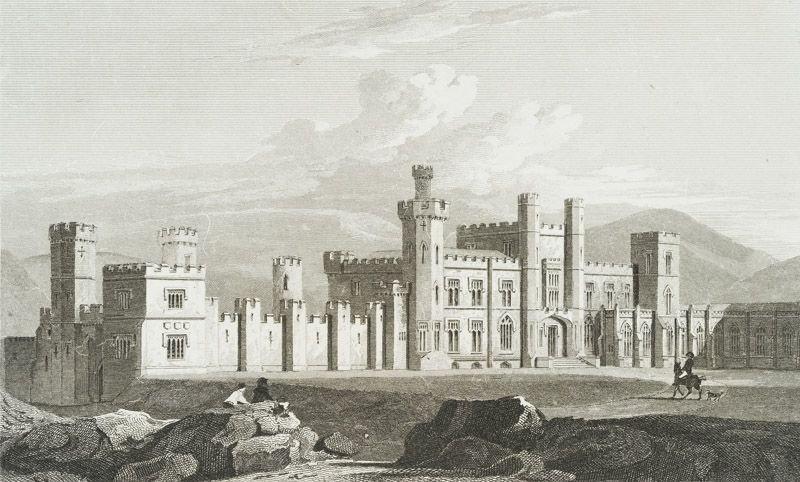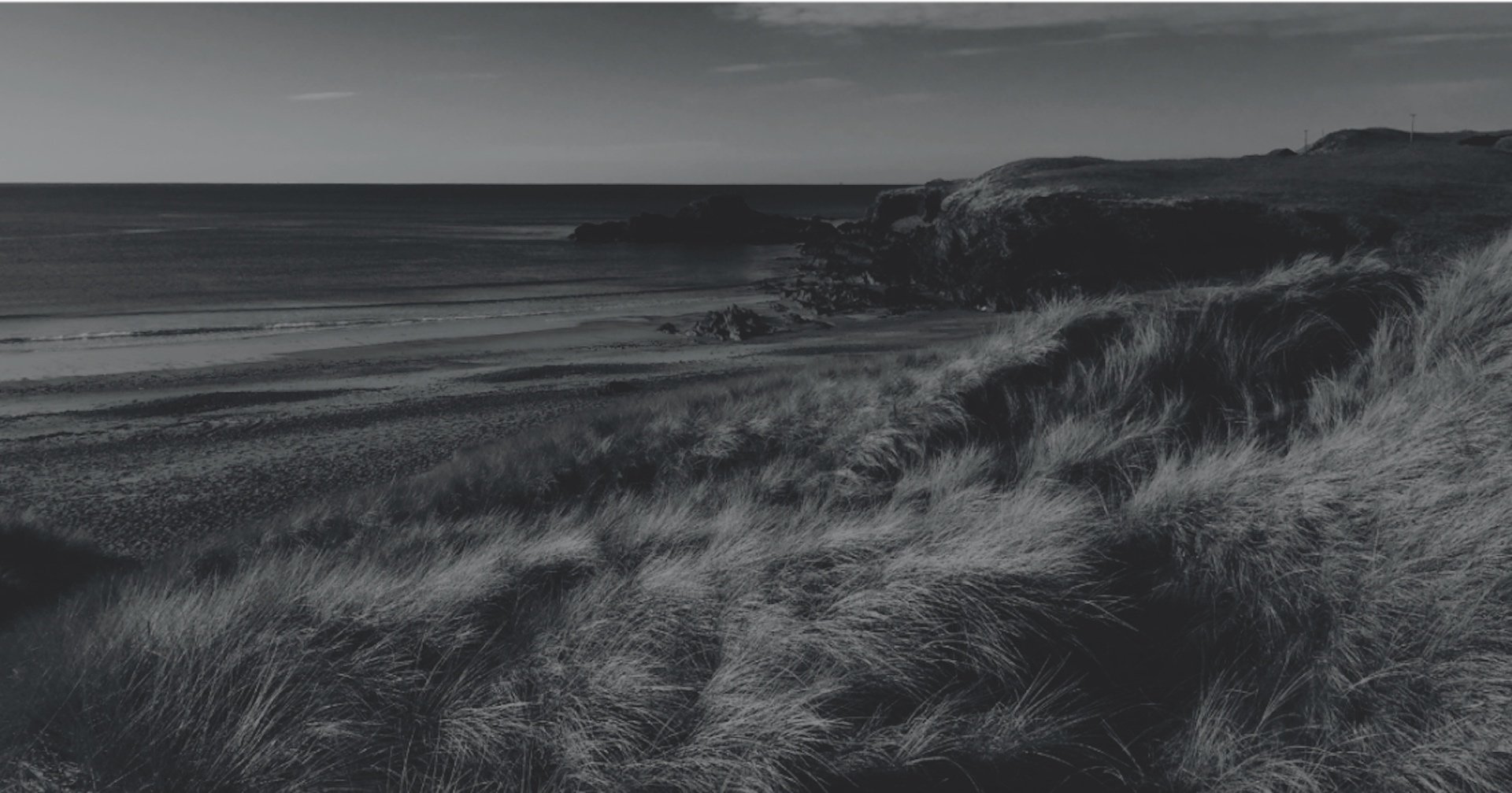

The History of Castle Freke
This beautiful and wildly romantic castle stands bold on a West Cork hilltop overlooking some of the most spectacular coastal scenery in all of Ireland. The Castle takes its name from the Freke family, later Evans-Freke and Lords of Carbery; the Freke’s built it initially as a Palladian mansion after their prior seat, the ancient nearby fortress of Rathbarry Castle, was heavily damaged by the 1755 tsunami from the Lisbon Earthquake. When Sir John Evans-Freke, Baronet, became the 6th Baron Carbery in 1804, he commissioned the renowned Gothic revival architect Sir Richard Morrison to expand and castellate it; fortunately, the vast neo-medieval structure of today still retains its graceful classical proportions.
The Freke family were originally of Viking heritage, the word Freke or Freki meaning warrior, audacious, or ‘wolfman’ in Old Norse. The family rose to prominence and considerable wealth in the 16th century, serving as Auditor to the Royal Treasury under King Henry VIII and Queen Elizabeth I. The Freke’s came to Ireland with their kinsman Richard Boyle, the Great Earl of Cork, in the 1580’s. Through the 18th and 19th centuries the Freke estates in West Cork extended over 14,000 acres, including the port of Baltimore and the outlying islands known to this day as Carbery’s Hundred Islands. When the Freke lands were joined with the considerable Carbery estates of the Evans family in England and Ireland, it created the richest barony in Ireland - and Castle Freke became an important economic and social hub for the region until it was sold in 1921.
Castle Freke is of considerable architectural interest for several reasons apart from its obvious grandeur. The first is that, although there are no known records to chronicle this, it is clear from the stone and brickwork in the raised basement that a considerable structure in the manner of an Elizabethan ‘stronghouse’ existed there prior to the mid 1700’s; clearly the Palladian mansion was built on top of and incorporated that building. The second is that, unlike many earlier mansions that were turned into neo-medieval castles during the Gothic revival period, the castellation of Castle Freke was completed without compromising its architectural roots; the magnificently proportioned state rooms of the interior were retained also, indicating respect for the classical Italian sensibilities of the earlier construction, despite their being out of fashion by the early 1800’s.
A more contemporary aspect of the castle is that a great fire in 1908 caused by an electrical fault in the roof of the main block destroyed most of the castle and its towers. The family rebuilt it with extensive use of reinforced concrete structural elements throughout, this being ‘new technology’ at the time. Their aim was to ensure that no electrical fires would destroy the castle again, but in due course this saved the castle from a different fate. The current owner’s great uncle, the notorious John, 10th Baron Carbery, sold the Castle Freke estate in 1921 and left for the U.S. ( and later Kenya ); the castle passed through various hands without being occupied as a home until in 1956 it was stripped of everything of salvage value, and then abandoned, completely exposed to the elements.
When Stephen Evans-Freke, youngest son of the 11th Baron, returned from the U.S. to repurchase the castle in 1999, it was a forlorn and brooding presence in the landscape, smothered in ivy and vegetation with trees growing in the courtyards. Any thoughts of its restoration would have seemed laughable.
However, when in 2003 work started on cutting away the heavy sheets of ivy hiding the stonework, it became apparent that the combination of excellent workmanship in the original stonework and the reinforced concrete structural work after the 1908 fire had saved the integrity of the castle from destruction by the elements. This has made possible the ongoing restoration of this magnificent building which is so much a part of our national architectural heritage.

The History of Rathbarry Castle
Today the high walls of this ancient fortress contain the private residence of the Evans-Freke family of Castle Freke, as well as the stable courtyard and estate farmyard. The house enjoys a spectacular view out over sea marshes to the Atlantic ocean breaking on Long Strand beach and the Galley Head lighthouse beyond.
Historically Rathbarry Castle had direct access to the ocean from its Water Gate. While its early history is not recorded, the stonework at the base of its high walls suggest that this was a stronghold as far back as the monastic civilization of Celtic Ireland from the 6th through the 9th centuries. One of the most important finds of 9th and 10th century coinage in Ireland came out of the silt just off what would have been the landing dock, suggesting that this castle may well have been sacked when a large Viking fleet raided the nearby monastic center of Rosscarbery in 990.
Rathbarry Castle takes its name ( literally “Stronghold of the Barry’s” ) from the powerful AngloNorman family who participated in the Norman conquest of Ireland in the 12th century. They were rewarded with extensive estates in Munster and through successive reigns of the English kings they became Barons, then Viscounts and in the 1500’s Earls of Barrymore. In the 15th century Randal og Barry erected a very substantial fortress here, and in 1500 the 16th Baron and 3rd Viscount was born here.
In the 1580’s the Freke family arrived in Ireland as part of the second Elizabethan settlement of Cork. The family had become very wealthy during the reigns of Henry VIII and Elizabeth I through holding the lucrative role of Auditor to the Royal Treasury, especially during Henry’s Dissolution of the monasteries. The Freke’s were related by marriage to Richard Boyle, the Great Earl of Cork who became Lord Treasurer of Ireland and one of the wealthiest men in Europe at that time, and also through marriage were related to the De Barry family.
Around 1620 Captain ( later Sir ) Arthur Freke leased Rathbarry Castle and its estate from the Earl of Barrymore, and subsequently purchased it prior to undertaking extensive works to restore and strengthen the castle’s fortifications, a sensible precaution since at that time this was the last major stronghold on the Western edge of the Cork ‘Pale’ under the control of the British Crown. The castle was attacked several times during the uprisings of the Irish clans starting in 1641, and in 1642 Arthur Freke withstood the longest siege in Irish history from January through till October of that year. At that time the walls of the fortress encircled 7 acres, and it’s garrison boasted about 300 defenders. Eventually the Freke’s were rescued by an expedition from Bandon, and the castle was put to flames to prevent its occupation by the Irish. After peace was restored in 1644 the family returned and restored the residence, only for it to be burnt again in 1688 by the forces of King James II since the Freke’s were staunch Protestants and supporters of King William III.
The exact date when construction of Castle Freke on a hill just inland from Rathbarry Castle is unknown, but we believe it was much earlier in the 18th century than most authorities claim, given the architectural witnesses in the lower levels of the new castle, and by 1720 Sir Percy Freke ( 2nd Baronet ) was calling himself ‘of Castle Freke’. The Freke family expanded its West Cork holdings rapidly through the first decades of the 1700’s, and by the 1750’s they held over 14,000 acres of lands and the township of Baltimore.
Disaster struck in 1755, with the tsunami from the Lisbon earthquake hitting the south facing shoreline of West Cork, leaving 30-40 foot high sand dunes in its wake and closing up many of the active ports of the region, including Rosscarbery and Clonakilty. It can be assumed that most of the structures standing within Rathbarry Castle at that time would have been destroyed, and the shoreline is now a ½ mile from the former water gate. The residence that was built subsequently within its walls and that is the family home today was the residence of the Bailiff, or manager of the Castle Freke estate.


